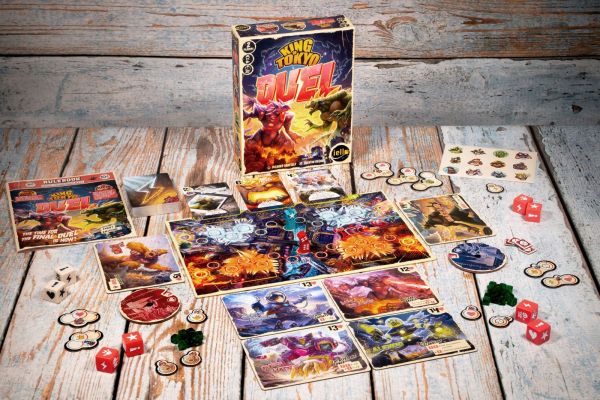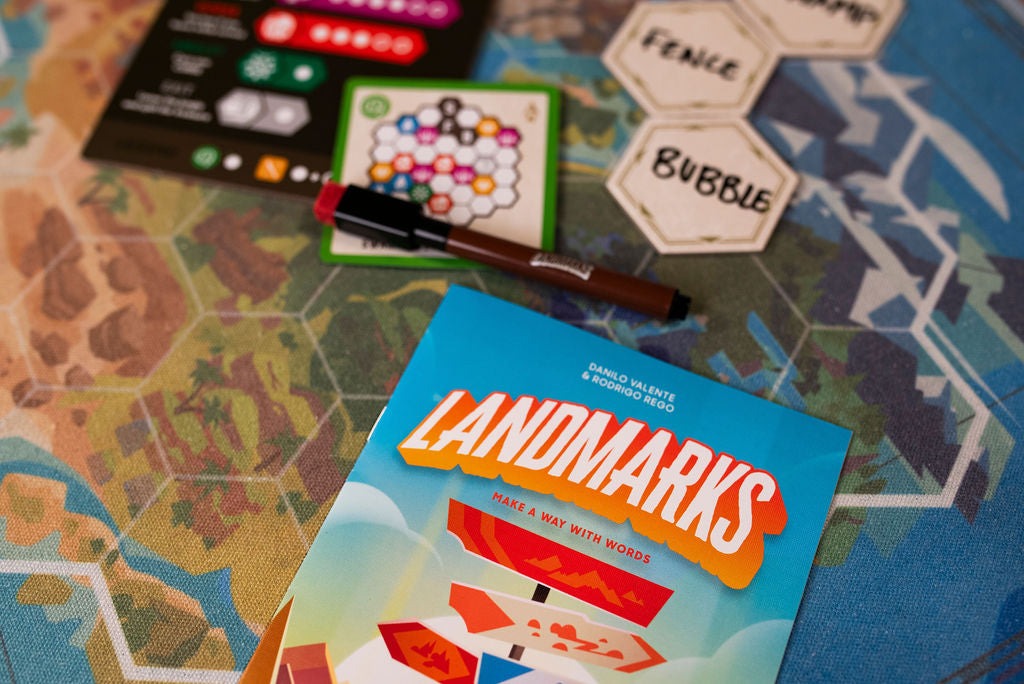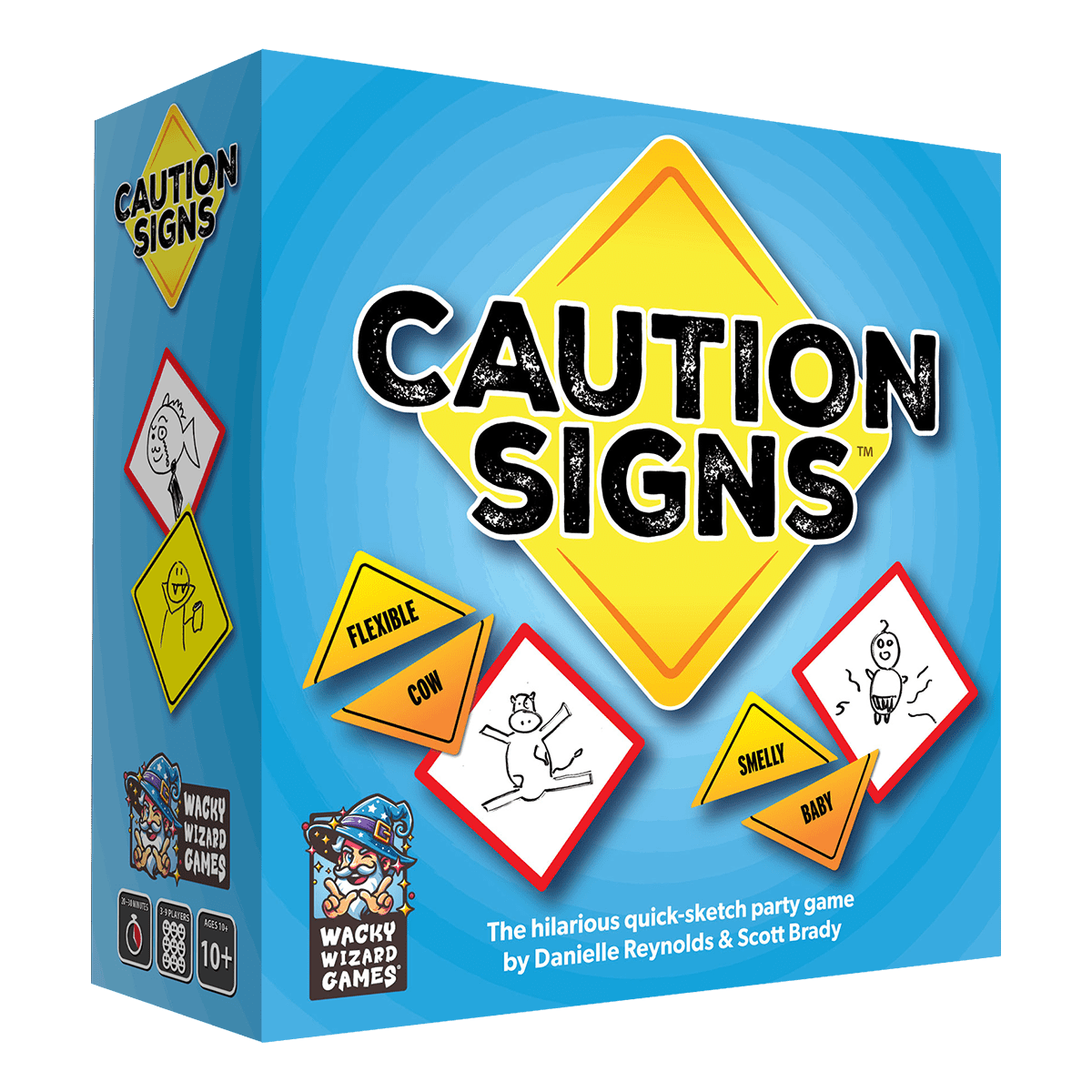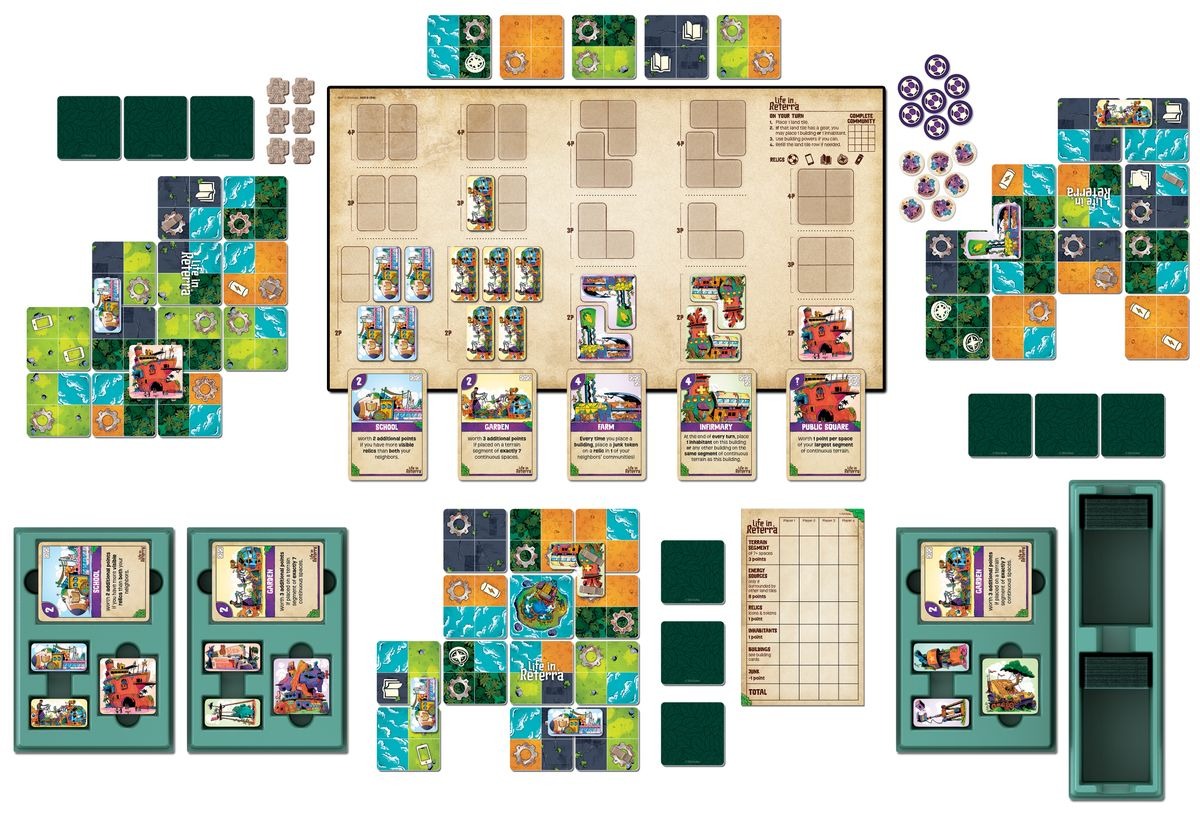Rapid Reviews: King of Tokyo: Duel, Landmarks, Caution Signs, Life in Reterra

This post contains affiliate links. If you use these links to buy something, we may earn a small commission. Thank you!
In our latest Rapid Reviews article, we dive into a diverse selection of board games, each offering a unique gaming experience. From the two-player intensity of King of Tokyo: Duel to the cooperative puzzle-solving of Landmarks, there's something for every taste. Get ready to roll dice, strategize, and have a blast with these captivating games!
King of Tokyo: Duel

Image provided by the publisher
2 players | ages 8+ | 20 minutes
Designed by Richard Garfield
Published by IELLO
Buy on Amazon
The popular Richard Garfield casual game now comes in a two-player-only dice chucker that is as surprisingly strategic as it is just sheer fun. Players will take a health counter as well as choose one of the six available monsters, each with a unique ability and a health total. They’ll take turns throwing the six dice in a quest to either pummel their rival or win the tug-of-war between fame and destruction on the shared central board. Much like the original, the symbols on the dice dictate what players may gain using Yahtzee mechanics. Earn energy to buy power cards from the shared market, which can garner immediate, ongoing, or one-time effects. Rolling fists will allow you to cause damage to your opponent, and rolling three stars or broken buildings will allow you to move the respective marker(s) one step toward you on the shared board until both markers are in the spotlight zone leading to a win.
Having had a copy since Gen Con, this has been an instant hit with our family. It’s a quick game to play before dinner (or even while making dinner), and the original’s King-of-the-Hill mechanic being reworked in the Duel version to be a tug of war makes games have the same duality of the namesake with a streamlined experience. There is also tons of room for new monsters, mechanics, and power cards to be introduced without bogging down the game’s core principles.
Landmarks

Image provided by the publisher
2-10 players | ages 8+ | 20 minutes
Designed by Rodrigo Rego & Danilo Valente
Published by Floodgate Games
Buy on Amazon
For years, designers and publishers have been chasing the simplistic and puzzly joy of the Codenames franchise to mixed results. However, Rodrigo Rego and Danilo Valente have expanded upon that formula with Landmarks. One person will be directing the rest of the group on a journey across a hex-grid island to escape, along the way collecting treasure and trying to avoid traps. The guide will only have 7 tiles and three starting words to aid them, along with a card (similar to Codenames) that will have the various places the travelers are trying to navigate to. The trickiness is the directionality of taking the existing words on the tiles and writing a new word that somehow gets the group to place it on the grid in the spot and direction the guide wants them to go. As tiles dwindle, the guide needs to get players to watering spots to get more tiles, but collect curses and the number of available tiles decreases. If players can make their way to the designated exit before the guide runs out of tiles, they win.
Landmarks is a sharp game that accomplishes two goals of gaming: inclusivity and excitement. Everyone has to have an opinion about what the guide is inferring, and this basis can be different for each person participating. As you can imagine, this makes Landmarks better and more thrilling at higher player counts where these opinions can mesh, mingle, and cause mayhem – especially if the group plays on the harder difficulty. However, what Landmarks lacks is a variable scoring mechanism that rewards adventurous players who want to gain all the hidden treasure before escaping, or some sort of timed element to make their escape. That may be too much to ask for a base game. As it stands, Landmarks is a definite add to any casual game collection that likes wordy logic puzzles.
Caution Signs

3-9 players | ages 8+ | 20-30 minutes
Designed by Scott Brady & Danielle Reynolds
Published by Wise Wizard Games
Buy on Amazon
Everyone laments their terrible artistic skills, but Caution Signs encourages them in a fit of creativity that Pictionary rarely imagined. Players are given two prompts: an action or adjective followed as well as a noun. Their goal is to quickly draw a picture in 20 seconds for one designated person to guess. That person will draw two face-down adjective cards and two noun cards and mix them into the face-down prompts from the other players, and then turn them over. Here, they will be hoping to guess the mix of adjective and noun for each player’s drawing, earning themselves and their fellow players points. The game rotates around the table, with each player having two turns as guesser, and the player with the most points wins the game.
Clever and quick, Caution Signs is the best type of game because of its versatility at the game table. Easy to teach, it can be an icebreaker for a new gaming group or a great interlude in a night of heavier or more thoughtful gaming. It’s hilarious, smart, and rewarding. It’s not always the best picture, because even Picasso would struggle with only 20 seconds, but rather the wisest and most efficient sketcher.
Life in Reterra

Image provided by the publisher
2-4 players | ages 10+ | 35 minutes
Designed by Ken Gruhl & Eric Lang
Published by Hasbro
Hasbro seems to have gotten the memo that board gaming has evolved over the past two decades and that families are looking for something more than various versions of Monopoly. Life of Reterra is certainly a big swing and hit for the toy and game brand, bringing in someone with the playful punch of Ken Gruhl (Mantis, Happy Salmon) with the generational gravitas of Eric Lang (Blood Rage, Ankh). It seems like a strange pairing, but the combo does a great job with Life of Reterra.
At its surface, it’s a tile laying game. Players will be choosing from a market of 2x2 tiles to build a tableau that is 4x4 tiles wide. Each tile has some different landscapes and players must connect at least one of these landscapes with a matching one as they build out their post-apocalypse base. However, tiles will also have gears and various artifacts on them, which are crucial to Life of Reterra’s second act. After putting together gears on the same landscape, players are then able to place building tiles over those gears. These buildings will be central to scoring points at the end of the game. Some of them award extra points for all uncovered artifacts, the biggest uninterrupted swatch of land, or having an exact number of spaces of a specific land type. These buildings and their powers are represented by cards, which can not only have an easy or more difficult side, but can be mixed and matched upon multiple permutations to create a different gaming experience for different groups. It can be a cozy multiplayer solitaire experience or a cutthroat game of covering up an opponent’s artifacts.
This variety of styles and strategies not only works for families who are introducing younger ones to the hobby (though the game recommends ages 10 and up, I’ve played with 7 and 8-year-olds without modifying any rules without issue) but also the most competitive of groups who want to throw some metaphorical elbows.




